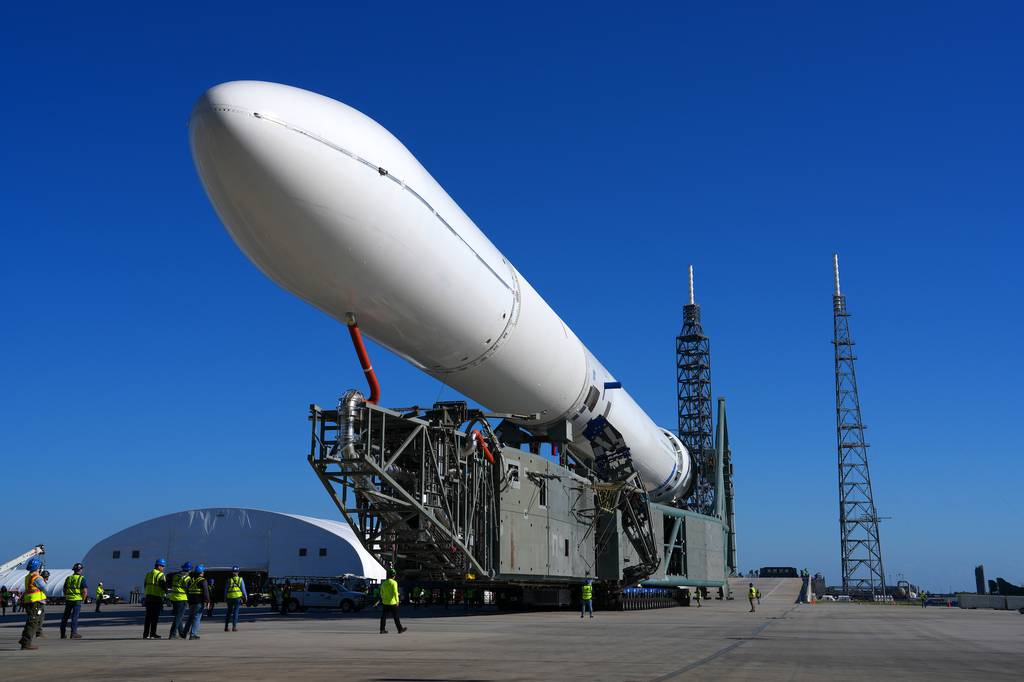
The Space Force chose Jeff Bezos’ Blue Origin to compete alongside incumbents United Launch Alliance and SpaceX for launch missions worth up to $5.6 billion over the next five years.
The National Security Space Launch contracts, announced June 13, opens competition for the Space Force’s launch enterprise, which to date has been dominated by SpaceX and ULA, the only companies eligible to fly Defense Department missions.
Blue Origin’s entry into the market is due in part to the Space Force’s new strategy for space launch, which it calls NSSL Phase 3.
Under that approach, the Space Force created two lanes in which companies can compete — Lane 1 is for commercial-like missions and is geared toward new providers and Lane 2 is reserved for firms whose rockets meet more stringent security and performance requirements. The contracts announced June 13 are for Lane 1.
“Today marks the beginning of this innovative, dual-lane approach to launch service acquisition, whereby Lane 1 serves our commercial-like missions that can accept more risk and Lane 2 provides our traditional, full mission assurance for the most stressing heavy-lift launches of our most risk-averse missions,” Frank Calvelli, assistant secretary of the Air Force for Space Acquisition and Integration, said in a statement.
Lane 1 will include at least 30 missions and, while the three firms are the only providers who can compete for the first round of contracts, newcomers can bid to join the pool after their rockets fly at least once.
Companies including Firefly Aerospace, Rocket Lab and Relativity Space are all developing launch vehicles with Lane 1 in mind.
Brig. Gen. Kirstin Panzenhagen, Space Systems Command’s program executive officer for assured access to space, said the service anticipates more providers will join the contract as their rockets qualify, noting that the next chance for those firms to on-ramp will come in the fall of 2025.
“As we anticipated, the pool of awardees is small this year because many companies are still maturing their launch capabilities,” she said in a statement. “Our strategy accounted for this by allowing on-ramp opportunities every year, and we expect increasing competition and diversity as new providers and systems complete development.”
As part of their selection for Lane 1, SpaceX and ULA each received $1.5 million for any risk-reduction and security measures needed to ensure their rockets meet the Space Force’s requirements. As a new entrant, Blue Origin received $5 million to cover an initial capabilities assessment.
The service also released two solicitations as part of Lane 1 — one to launch seven missions for the Space Development Agency and another for a National Reconnaissance Office launch.
Meanwhile, the Space Force expects to announce up to three Lane 2 companies this fall. Most of those 49 missions will go to two firms — likely SpaceX and ULA — but the service has the option to choose a third provider if a company presents a sound plan to certify its rocket for Lane 2 launches by 2026.
Courtney Albon is C4ISRNET’s space and emerging technology reporter. She has covered the U.S. military since 2012, with a focus on the Air Force and Space Force. She has reported on some of the Defense Department’s most significant acquisition, budget and policy challenges.
- SEO Powered Content & PR Distribution. Get Amplified Today.
- PlatoData.Network Vertical Generative Ai. Empower Yourself. Access Here.
- PlatoAiStream. Web3 Intelligence. Knowledge Amplified. Access Here.
- PlatoESG. Carbon, CleanTech, Energy, Environment, Solar, Waste Management. Access Here.
- PlatoHealth. Biotech and Clinical Trials Intelligence. Access Here.
- Source: https://www.defensenews.com/battlefield-tech/space/2024/06/14/space-force-picks-three-firms-to-compete-for-56b-in-launch-contracts/



